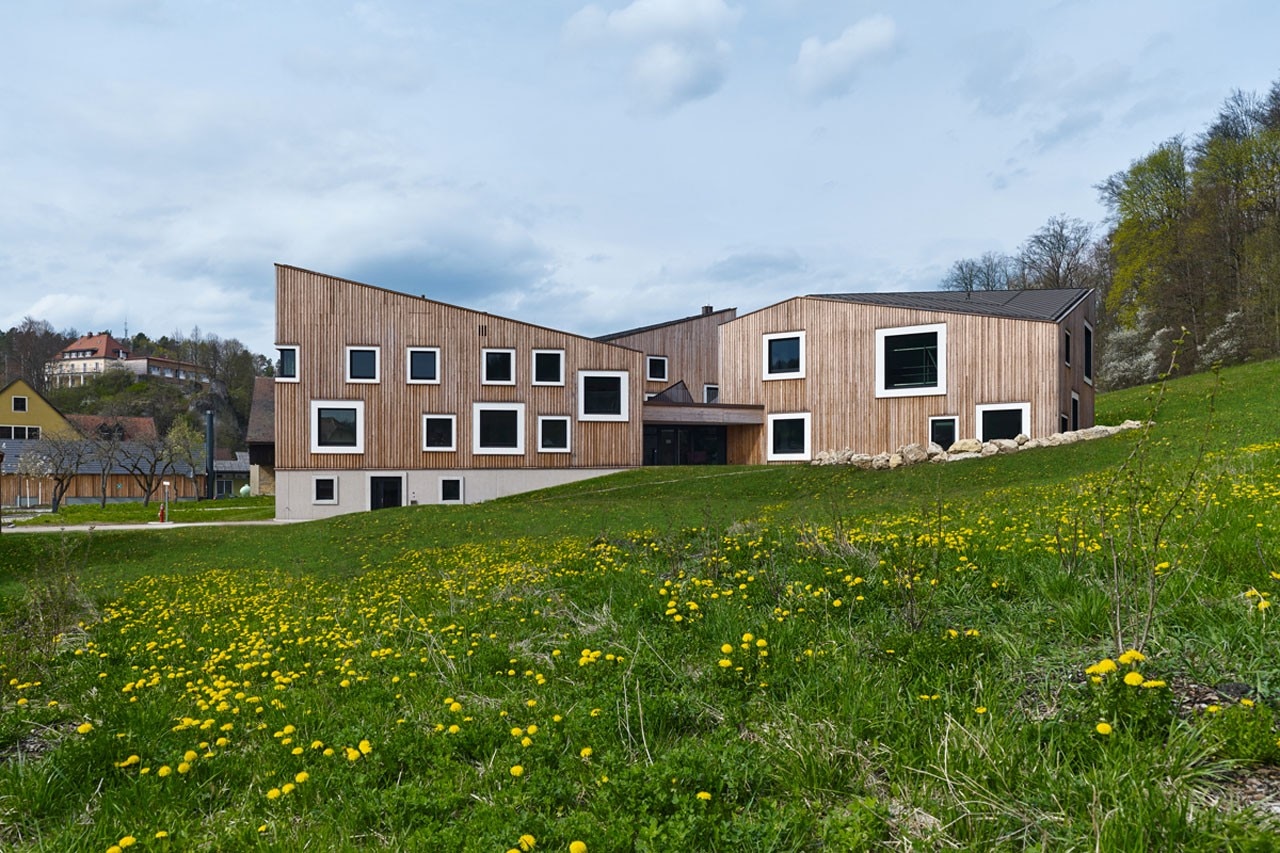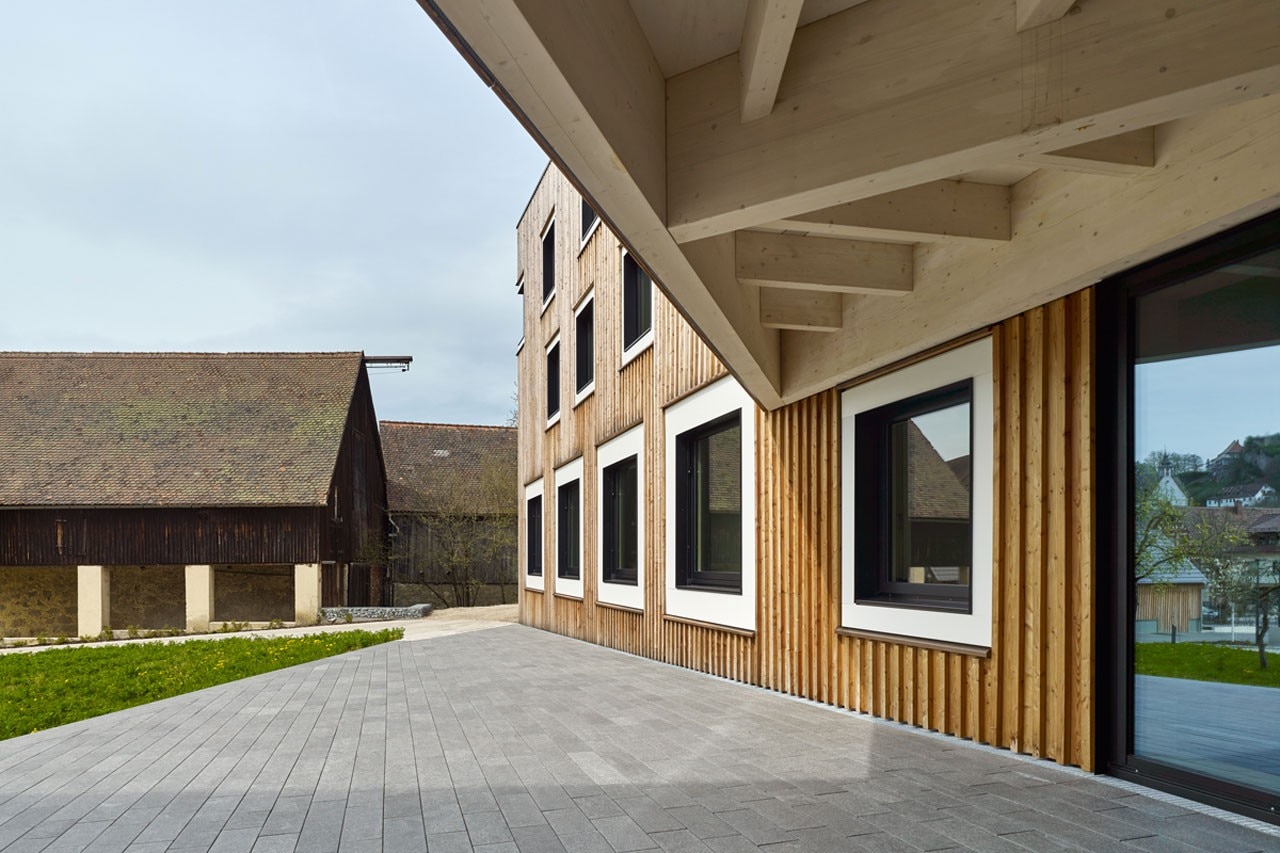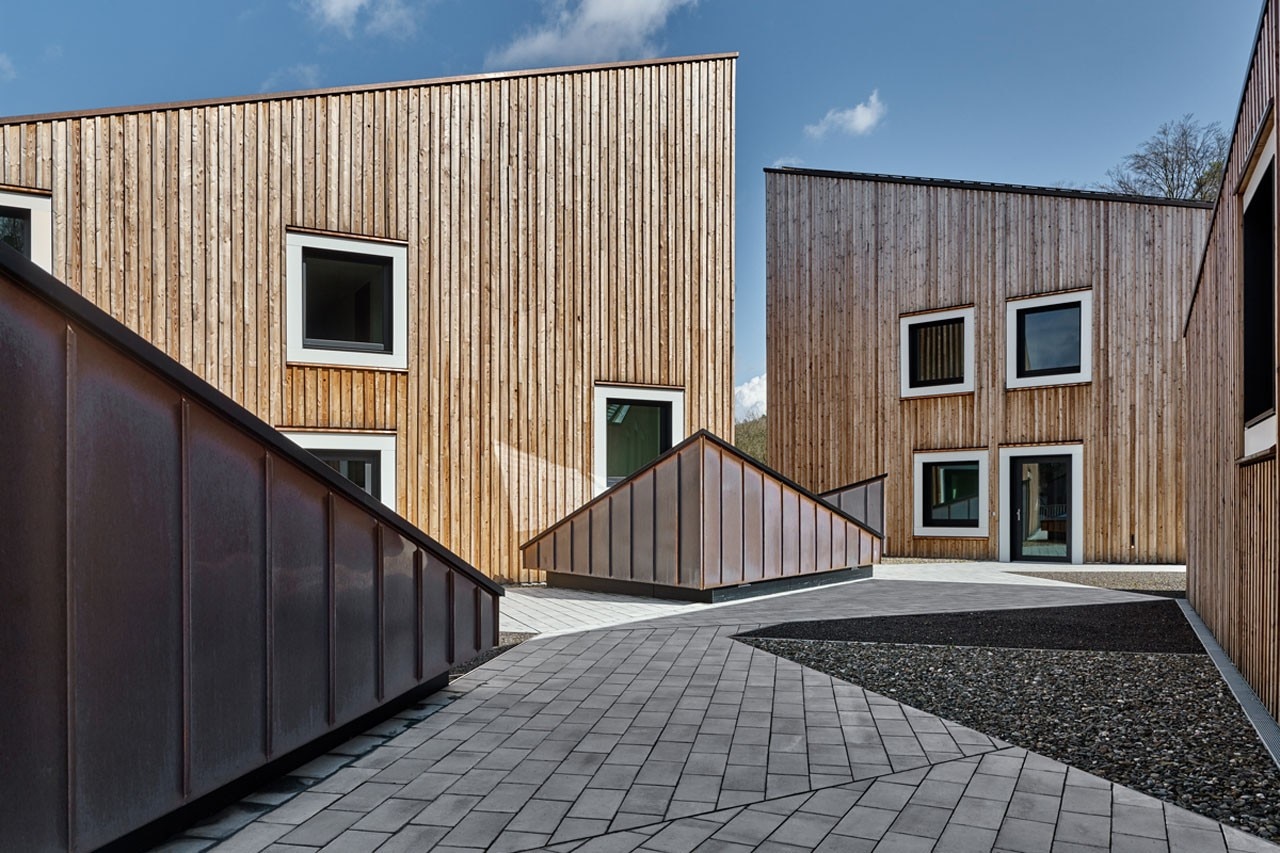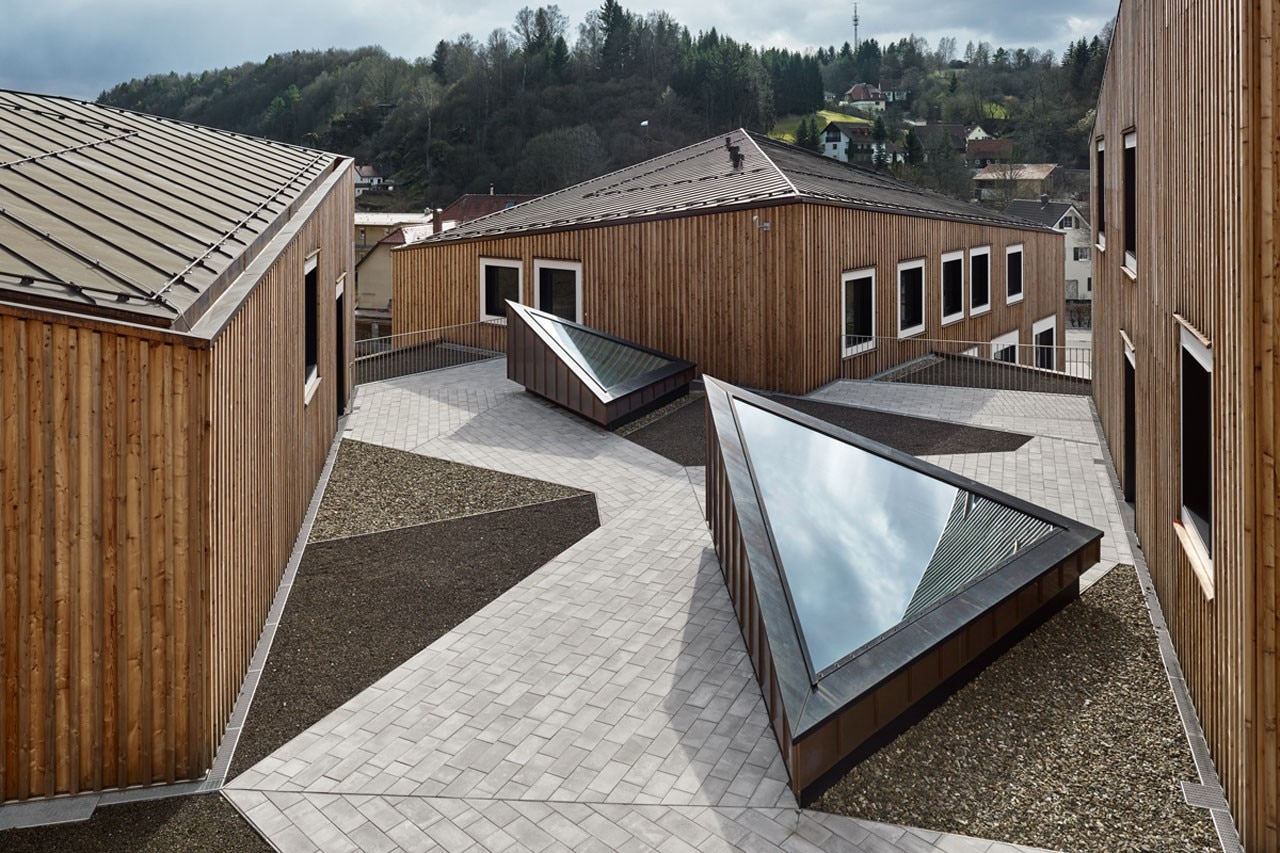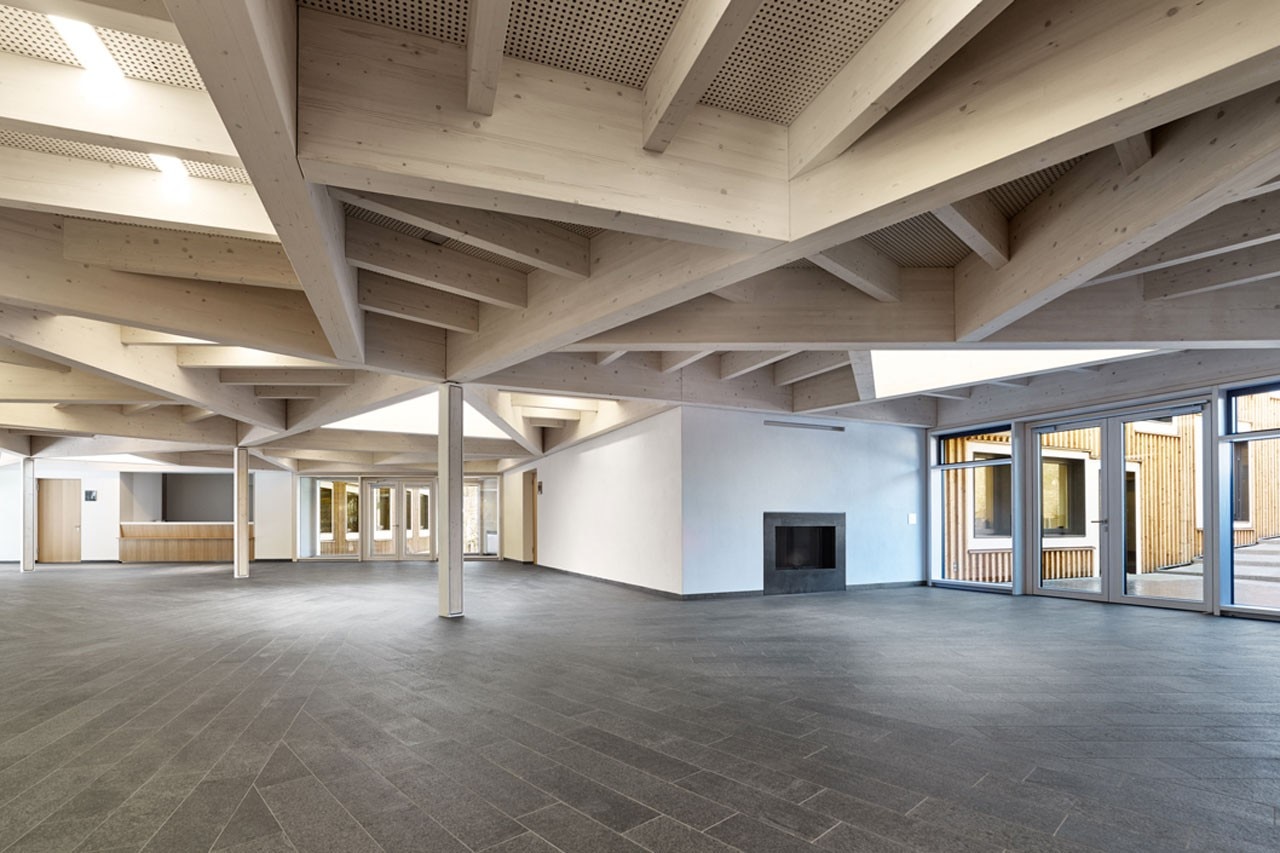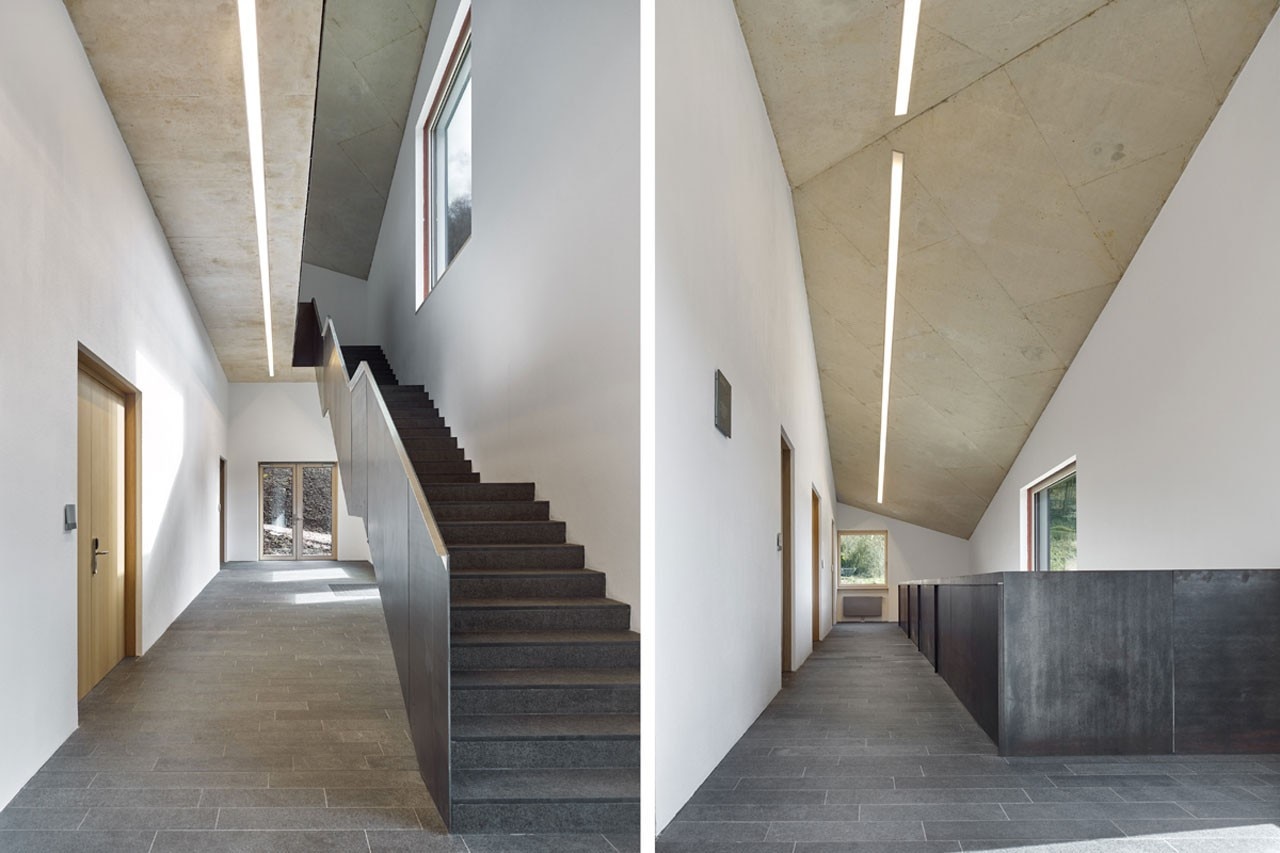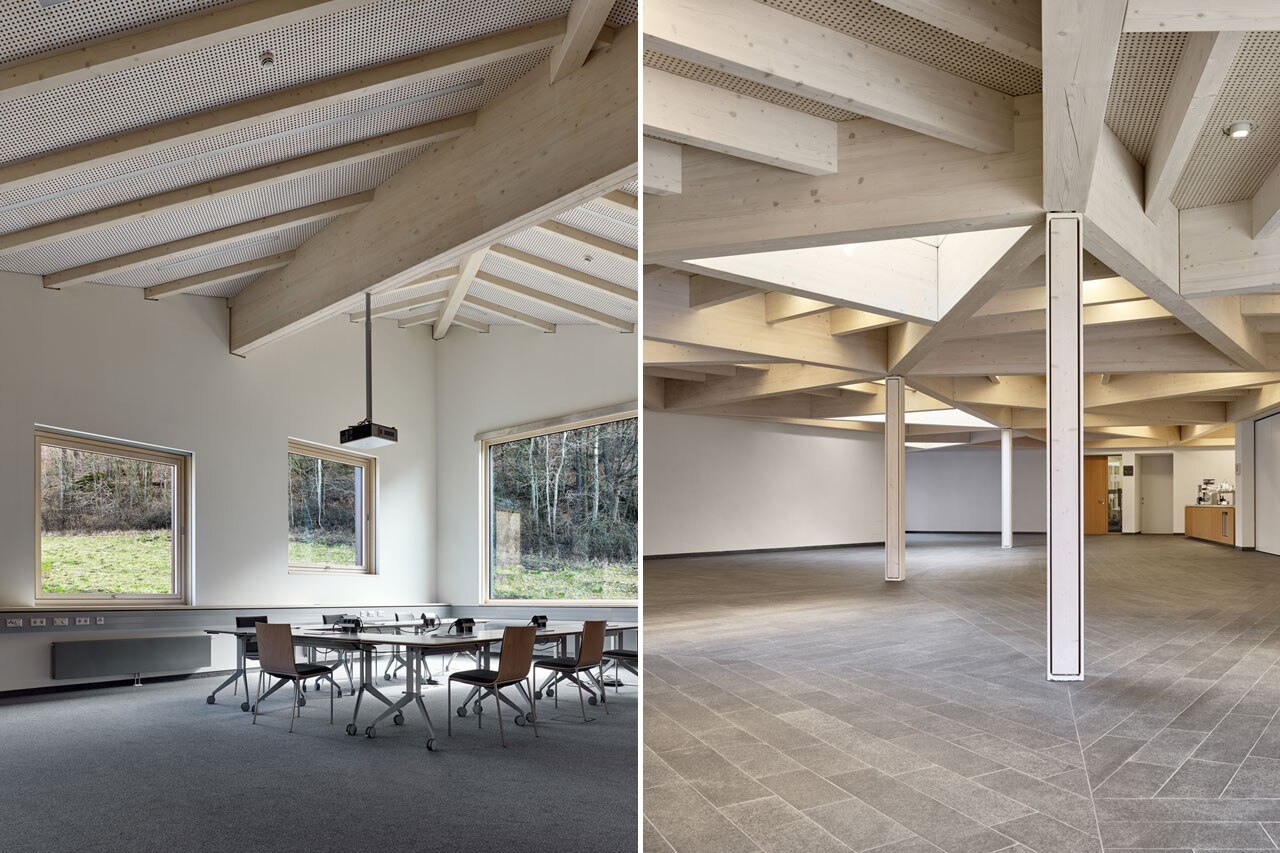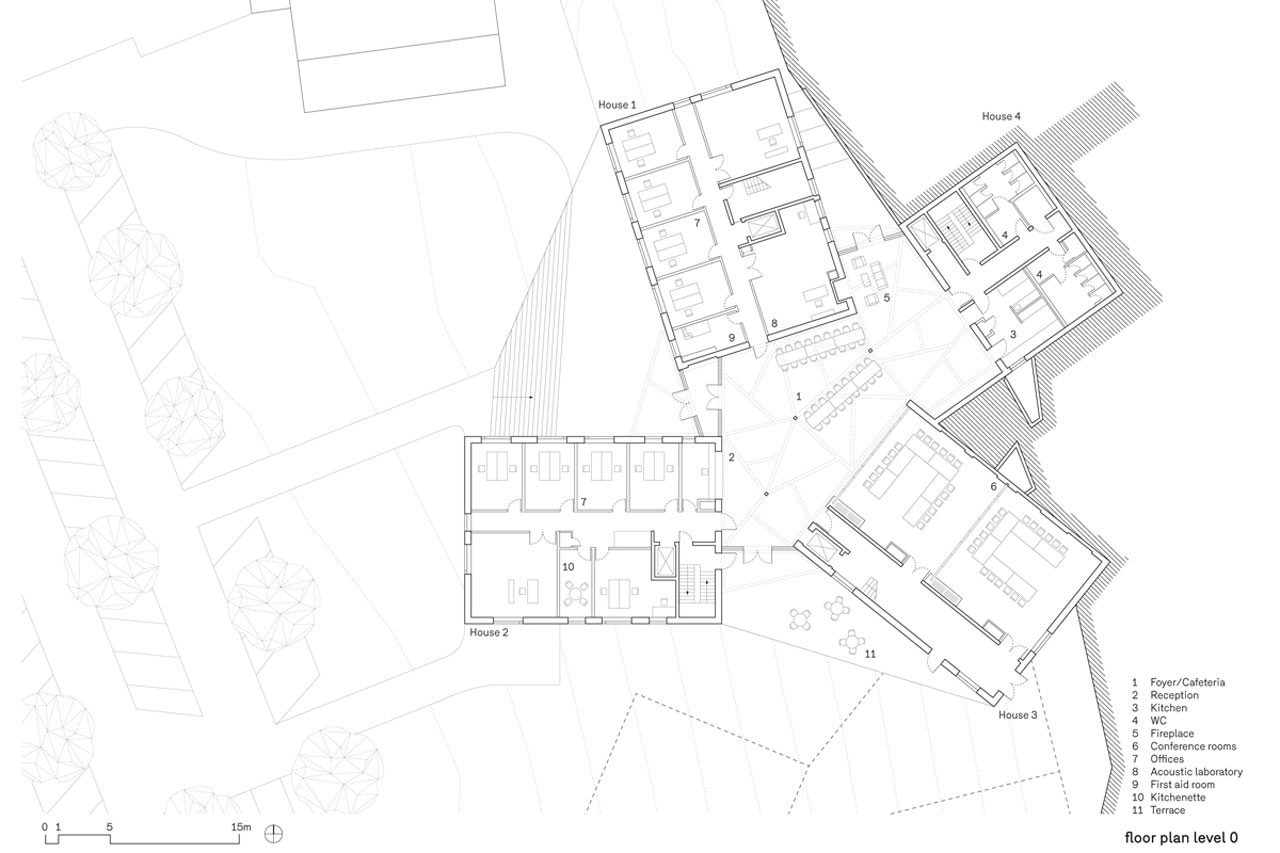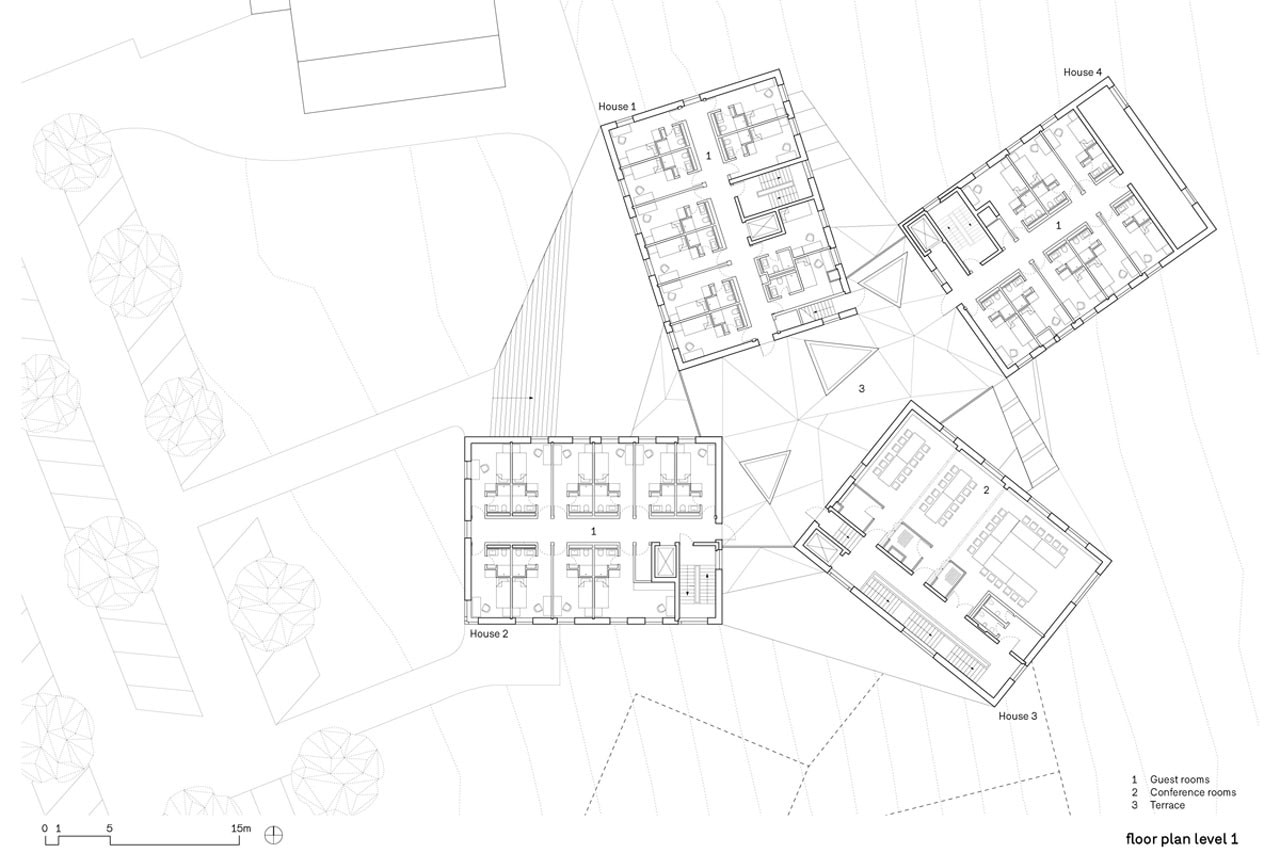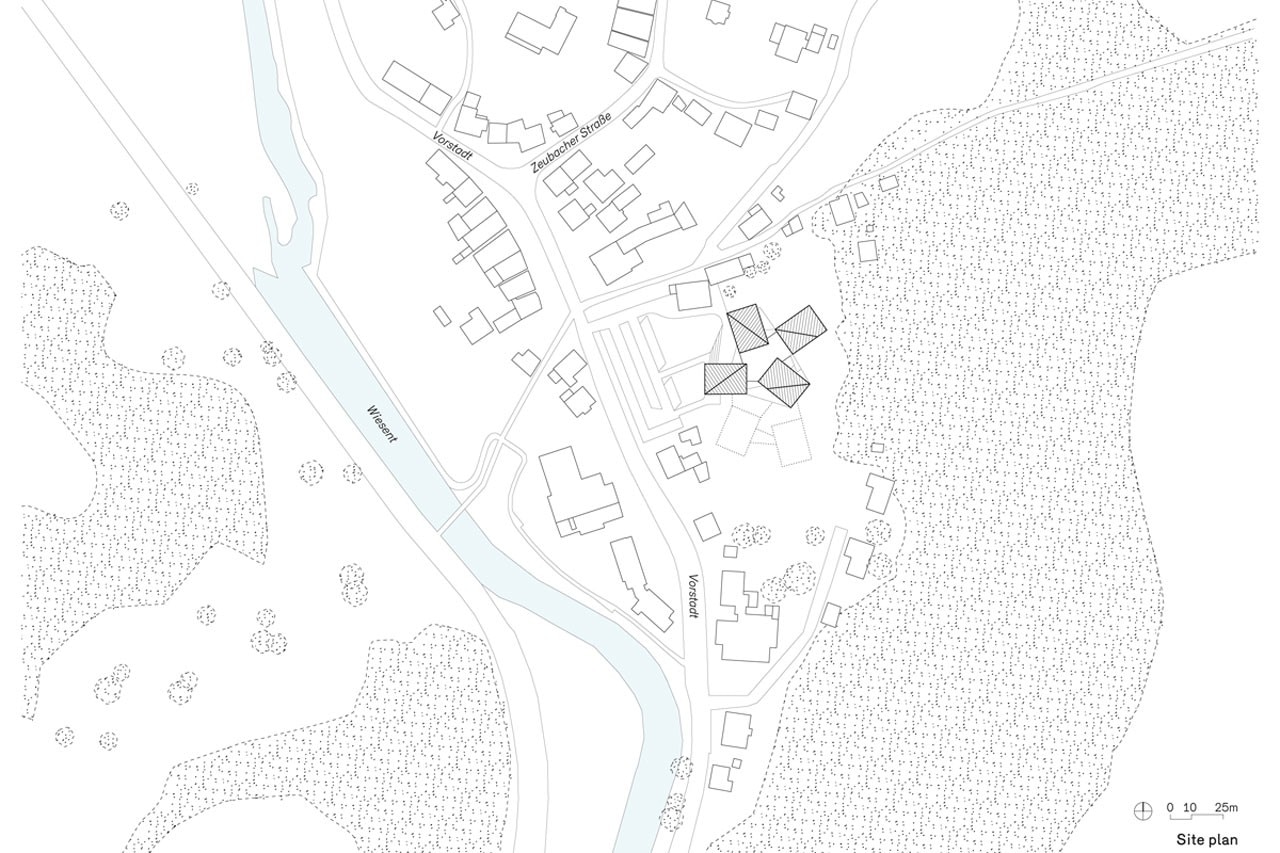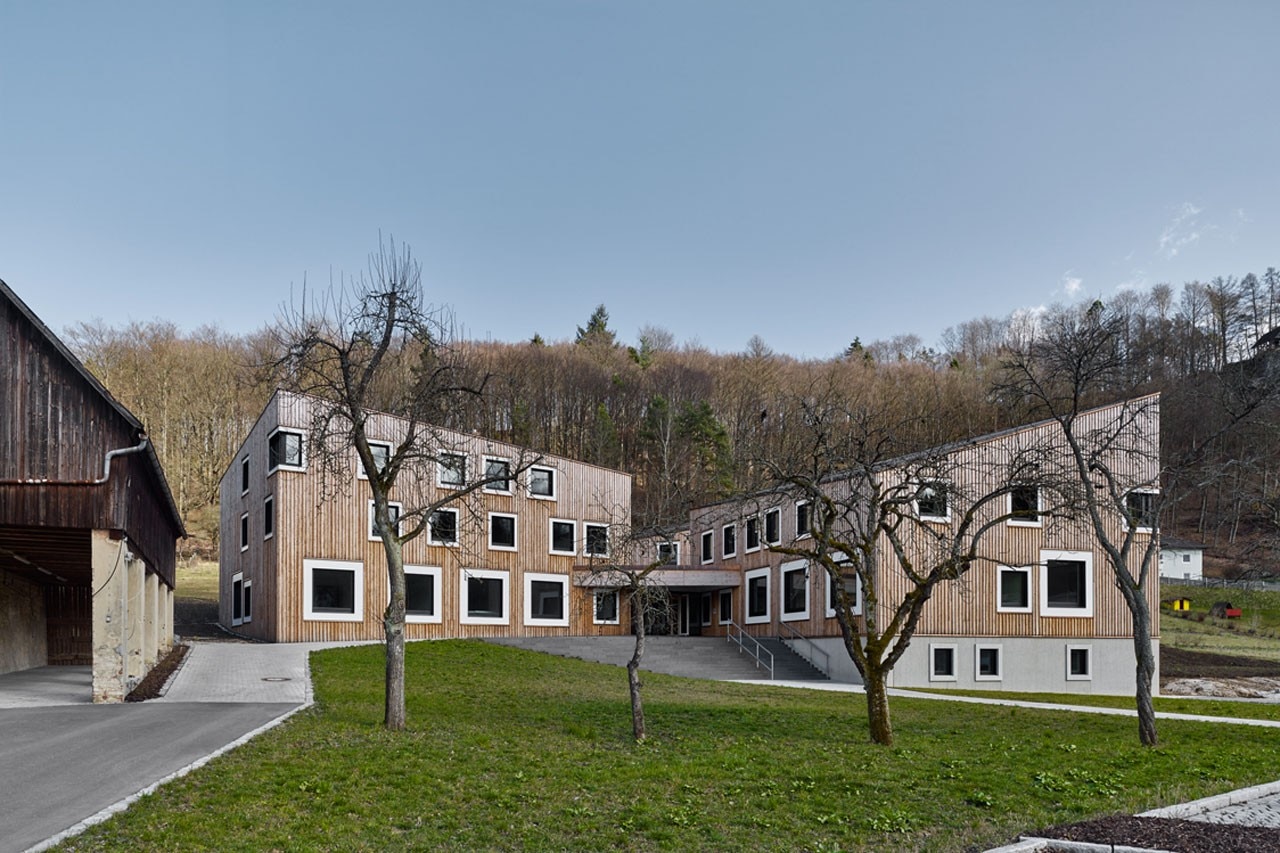
The village is characterized by a dense concentration of indigenous masonry and post and beam timber houses (fachwerk) distributed up and along the picturesque Wiesent river valley. Adjacent to the village and main road, the site is located on a gently sloped meadow bordered to the east by a forest. In order to integrate the research campus into the regional scale of the village the program is distributed into four 2 to 3 story pavilions with asymmetrically gabled roofs.
The building volumes are offset from each other in a non-parallel fashion mimicking the organic quality of the village planning while enhancing views, orientations, and generating a spatial dynamic between them including a generous stepped/ terraced entrance. This is a scaling strategy while allowing two future growth modules (pavilions) to be added to the south.
The pavilions are connected centrally by a flat-roofed timber truss-work, which encloses the central event space punctuated by triangular skylights while providing an all-weather connection. The roof of this structure provides additional outdoor terraces to further enhance communication and discourse between researchers.
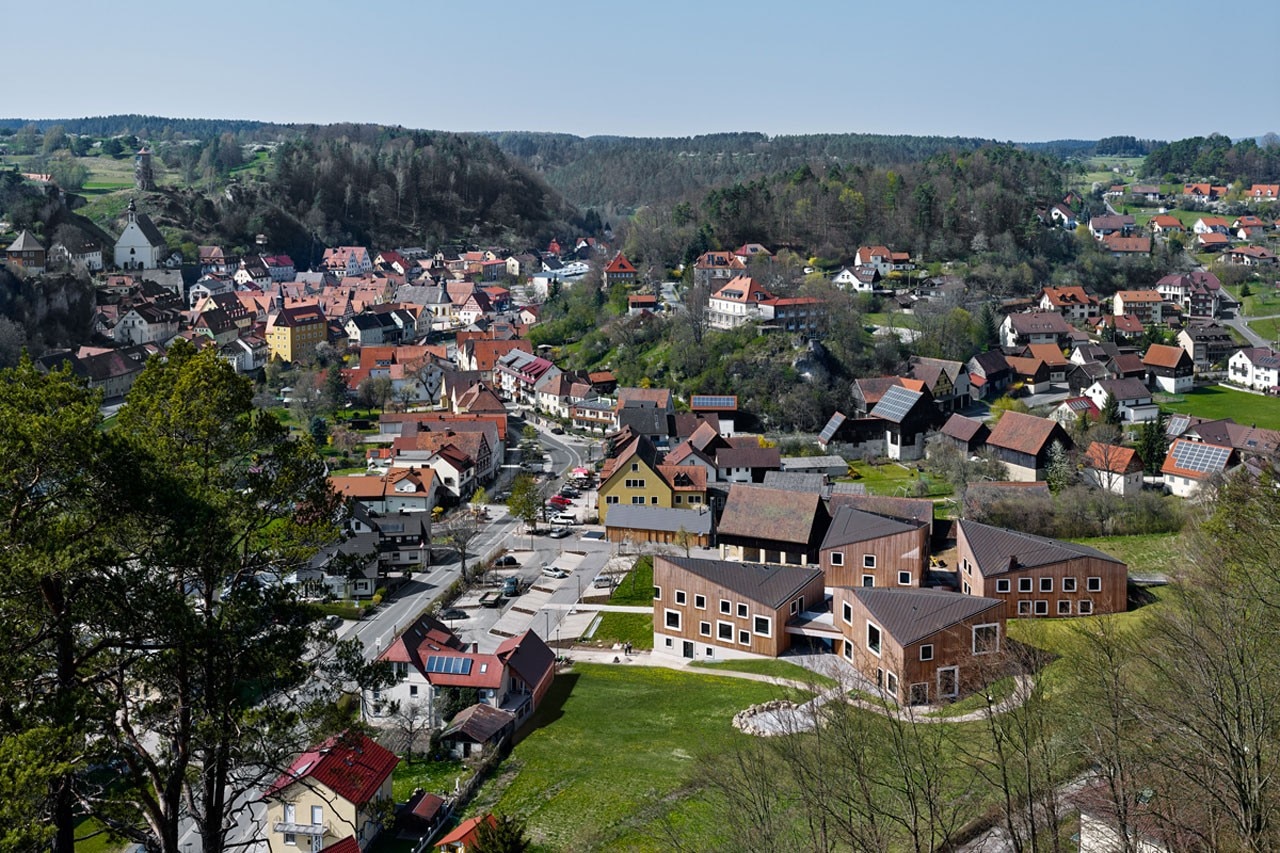
Stepping up the meadow slope the ensemble is further embedded into the village-scape while remaining legible as a place of learning, research, and exchange. Programmatically the lower levels house active uses such as laboratories, offices, and conference rooms while the upper levels house guestrooms.
This programmatic idea is paralleled by a hybrid construction of concrete for the lower levels to improve acoustical separation and energy use (heating and cooling) and wood/timber construction for the upper levels and roofs, a material that extends as a cladding material (larch board and batten) covering the four pavilions. This technological strategy earns the project a “passive energy” rating. The wood skin is complimented by a sandblasted concrete base course where it occasionally appears. A series of operable windows punch through the pavilion volumes, overscaled in relation to the programs, while simultaneously recalling the historical window types of the village. The roof and flashing is of standing seam copper – another material, like the wood cladding, which will weather gaining a patina over time.
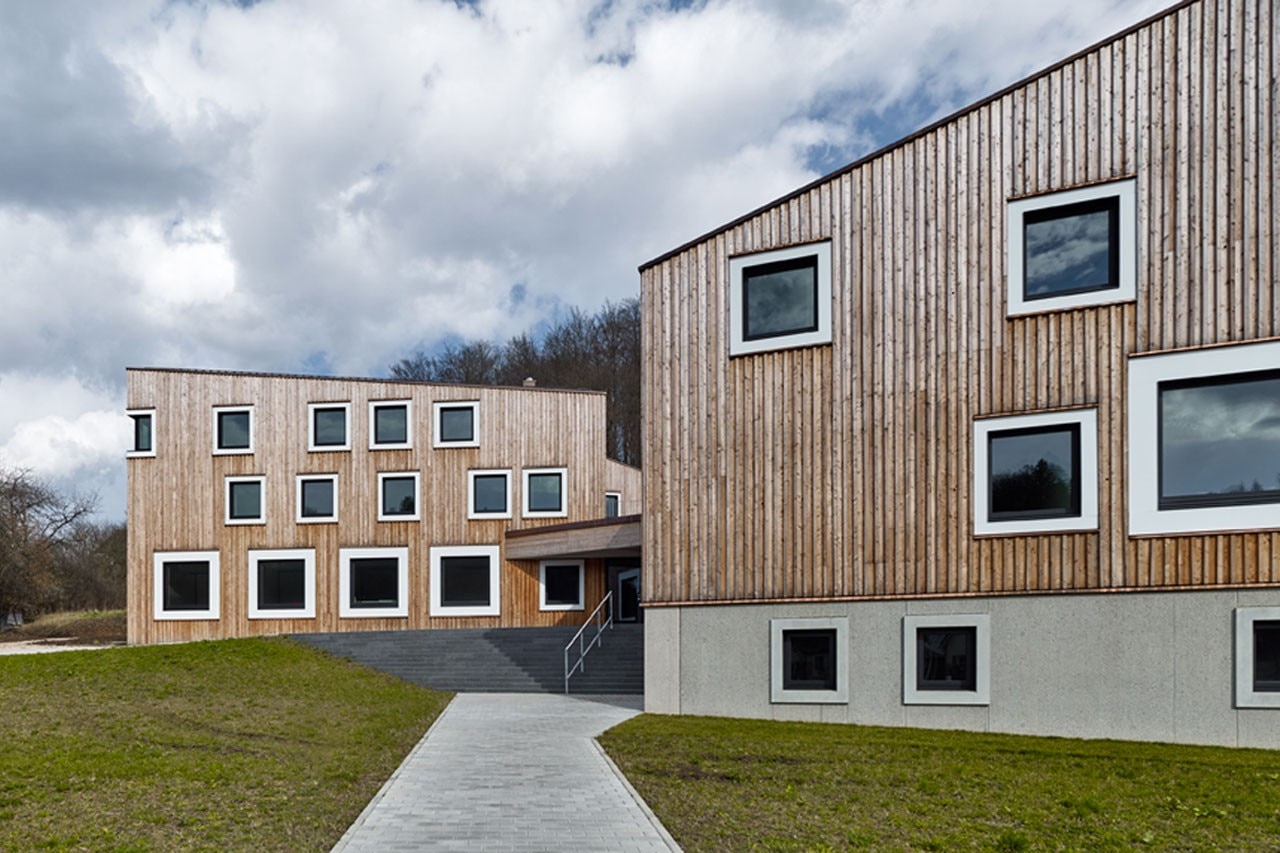
Fraunhofer Research Campus Waischenfeld, Germany
Program: university campus
Architects: Barkow Leibinger
Design team: Martina Bauer, Michael Bölling, Didier Callot, Clemens Klein, Ina Reinecke, Tanja Salomäki, Ulrich von Türckheim, Jens Wessel (Modell)
Construction team: Heiko Krech (Project Architect), Nina Cattaneo, Christian Coburger, Sonia Sandberger, Erika Tillberg, Ulrich von Türckheim, Daniela Voss, Annette Wagner
Construction management: Höhler+Partner Architekten und Ingenieure, Aachen
Structural engineer: Suess - Staller - Schmitt Ingenieure GmbH, HVAC Ingenieurburo Karl Muller GmbH
Electrical engineer: Haustechnik Projekt GmbH
Building physics: Ingenieurburo fur Bauphysik Horstmann + Berger
Fire protection: HHP West Beratende Ingenieure GmbH, Bielefeld / Peter Stanek
Facade consultant: Kucharzak Fassaden Engineering
Landscape architect: Lösch Landschaftsarchitektur
Area: 3,813 sqm
Completion: 2014


